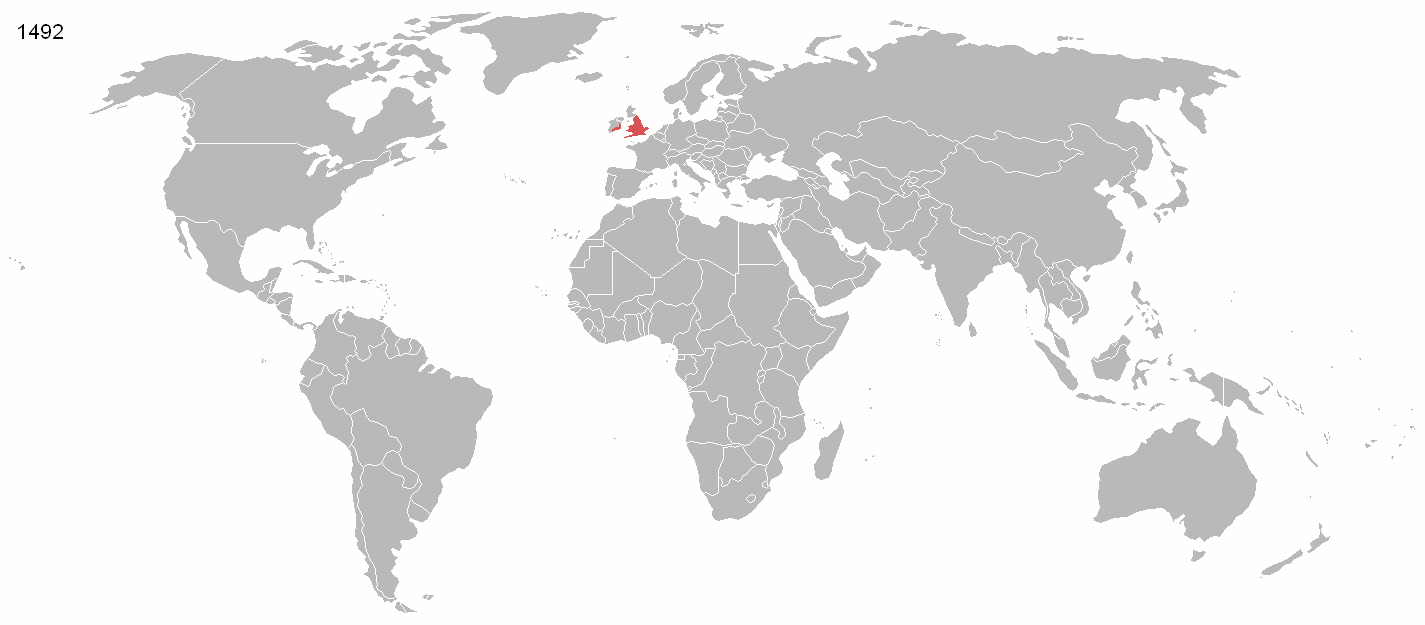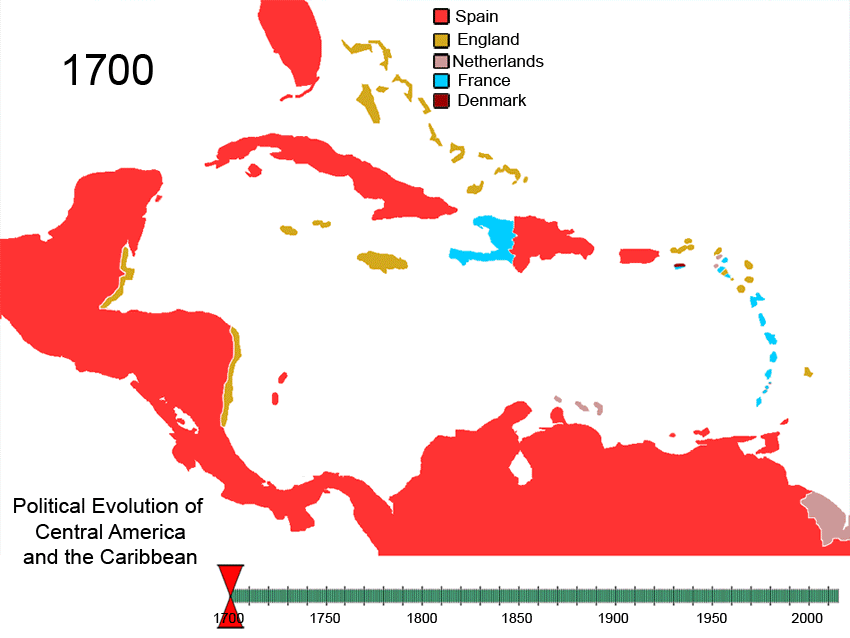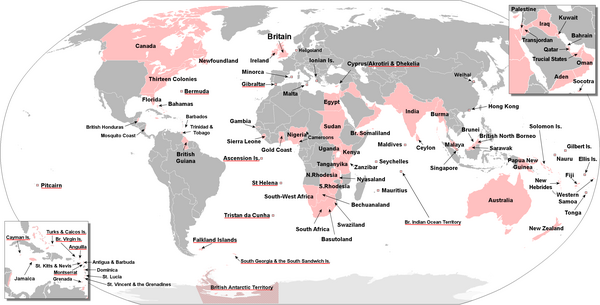Territorial evolution of the British Empire
The United Kingdom was the largest colonial power in history with colonies and protectorates on each of the inhabited continents. British colonies and protectorates covered in the late 19th century, almost a quarter of the Earth's land; the development of English language to the world number one was triggered, it was colonial language of the United Kingdom.
Special
The United Kingdom has some special features in current and former colonies. The Isle of Man and the Channel Islands are not under as the other colonies of the British state, but directly to the Queen. The Queen is also head of state of several independent states who once belonged to the United Kingdom. These include Australia, New Zealand and Canada. An official appointed by the Queen's Governor General represents the Queen here and signed for them all taken by the respective governments and parliaments decisions. The Queen has theoretically the right to block any of these decisions through their veto. This right, however, she made only twice use since 1953.
It should be noted that, especially to the settlement colonies, which had an Dominions in the British Empire an autonomous status, it is often not possible to give an exact date of independence. These areas obtained in the first third of the 20th century very extensive autonomy rights that have been written or expanded in the Statute of Westminster 1931. The British Parliament retained only have reserved rights in constitutional matters. In several constitutional reforms, which were carried out in the Dominions and Commonwealth Realms from the late 40s to the 80s gradually, this last legislative compounds were finally resolved definitively. In this connection reference is made to the development of the British Subject in the British Empire and to other national citizenships of the Commonwealth countries.
In contrast to most other colonial powers, the United Kingdom today for most of its former colonies good political and economic relations and is still closely associated with them in the Commonwealth of Nations. The territories for the international relations are still perceived by the UK are referred to as British Overseas Territories.
Overview of former and still existing territories by continent
Africa
Then Kenya
- Gambia
- Gold Coast
- Nigeria
- Sierra Leone
- Gambia: Presidential
- Gold Coast: now part of Ghana
- Nigeria: Presidential Federal Republic
- Sierra Leone: Presidential
- Gambia: first points since 1664, separate from Senegal since 1783
- Gold Coast: bases on the coast since 1621, Crown Colony since July 1874
- Nigeria: Southern Nigeria since 1849, northern Nigeria since 1885
- Sierra Leone: Freetown in 1791, Outback 1895
- Gambia: February 18, 1965
- Gold Coast: July 1, 1960, along with British Togoland as Ghana
- Nigeria: October 1, 1960
- Sierra Leone: April 27, 1961
- Gambia: Crown Colony
- Gold Coast: Crown Colony
- Nigeria: Lagos colony, or protectorate, co-management since 1914 ( Colony and Protectorate of Nigeria)
- Sierra Leone: Freetown colony (originally slaves feedback colony), Hinterland Protectorate
- Cape Colony
- Colony of Natal
- Orange River Colony
- Transvaal
- Cape Colony: January 8, 1806
- Natal: 1843/1856
- Orange River Colony: 1900/1902
- Transvaal: 1902
America
North America
- Massachusetts
- New Hampshire
- Rhode Iceland and Providence Plantations
- Connecticut, including at times independent colony of New Haven
- New York
- New Jersey, sometimes divided into East and West Jersey
- Pennsylvania with a minor country Delaware
- Maryland
- Virginia
- Carolina divided into North and South Carolina
- Georgia
- Nova Scotia ( with the sometimes independent colony Cape Breton Island)
- New Brunswick
- Prince Edward Iceland
- Province of Canada
- Territory of the Hudson 's Bay Company ( Rupert's Land, North -Western Territory) connected 1870
Central America
South America
Caribbean
Asia
Pakistan: August 14, 1947 Bangladesh: December 17, 1971
Europe
Australasia
Divided into
- New South Wales
- Queensland
- South Australia
- Tasmania
- Victoria
- Western Australia
Antarctic
Includes, according to the EU
- Falkland Islands ( topographically belonging to South America)
- South Georgia and the South Sandwich Islands
South Georgia from 1775 and the South Sandwich Islands from 1908
Furthermore, the United Kingdom claimed an area of Antarctica. It includes the Antarctic Peninsula, South Orkney Islands, the South Shetland Islands and a sector of the mainland to the South Pole.









